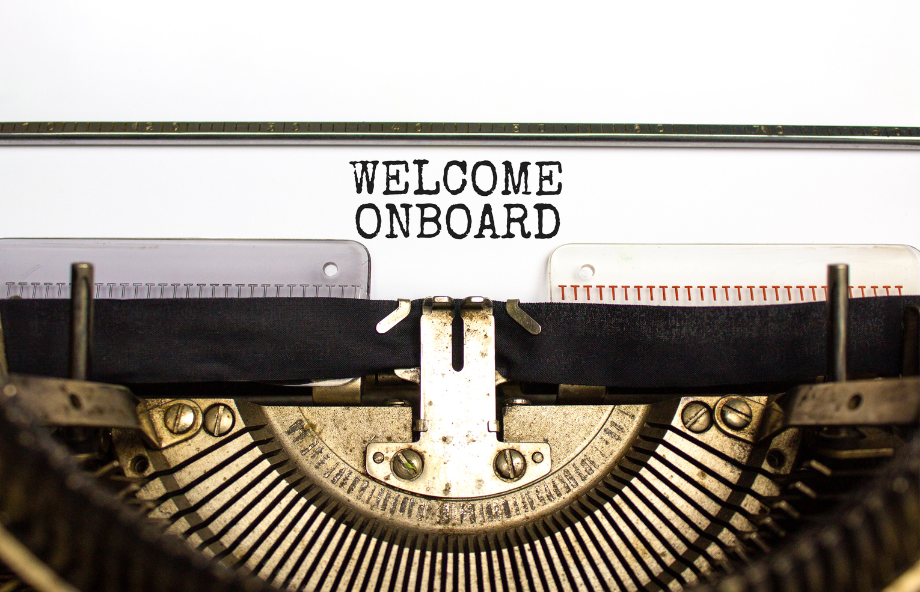
Unlocking Success: The Critical Role of Onboarding in Building High-Performing Legal Teams
- Posted by Joel Okoye
- March 25, 2024
Building an exceptional legal workforce goes beyond simply recruiting the right individuals for the job. It involves creating a comprehensive onboarding plan that integrates new employees into the organisation’s culture and equips them with the tools for long-term success.
What’s more, it doesn’t just facilitate success at the initial integration stage – it involves incorporating mechanisms that enable employees to not only thrive but also continually evolve and excel throughout their tenure within the organisation. An effective plan of action empowers employers and managers to utilise the onboarding process as a strategic tool to not only assimilate new hires but also to enrich and fortify the company culture, motivate and inspire teams, and significantly bolster staff retention.
So, what exactly should your onboarding strategy entail? Here’s what you need to know about building a robust plan.
Employee Orientation Vs. Employee Onboarding
Employee orientation and onboarding are distinct processes that play crucial roles in integrating new employees into the organisation. Employee orientation is typically a one-time event focused on familiarising new hires with the company’s policies, practices, and facilities. During this process, human resources personnel and partners formerly introduce employees to both the physical and hierarchal layout of their work environment.
On the other hand, employee onboarding is a more extensive process that spans the employee’s entire journey, from their initial introduction to their full integration and productivity within the organisation. When done right, effective onboarding not only accelerates the integration of new hires but also contributes to building a strong employer brand, fostering employee engagement, and ultimately leading to a more productive and cohesive team.
How To Design An Onboarding Plan
Research has consistently shown that a well-structured onboarding process significantly impacts employee satisfaction, retention, and overall team success – with a strong onboarding process said to bolster hire retention by 92% and productivity by over 70%.
While there’s no one-size-fits-all strategy for onboarding, there are some steps you can use to improve your chances of the right results for your team.
1. Decide on an optimal onboarding strategy
First, it’s worth considering how you’re going to deliver your onboarding experience to new hires. Traditionally, onboarding takes place within the office, consisting of regular face-to-face meetings, training opportunities, and induction processes. Since the shift to hybrid and remote work, 1 in 4 UK workers now work a hybrid work week (as of 2023), making efforts to both understand and cater to the preferences and needs of hires and employees vital to not just retention but general employee wellbeing.
As such, the trick in designing a flexible but successful onboarding plan lies in figuring out where to incorporate virtual elements, and what aspects require face-to-face interaction. This is best informed by the input of the new hires themselves, as they are best placed to offer pointers on what makes for the best onboarding experience.
2. Assign Each Staff Member an Onboarding Buddy
Because onboarding is a long-term development strategy for each employee, it requires as much of a social support system as a professional one, primarily in the form of someone to turn to for any questions, advice or company, especially considering the learning curve of a new hire is rarely linear.
Although seemingly insignificant, an onboarding buddy can prove key in integrating a new employee, as they can often be the difference between a rocky and frustrating start and a much smoother onboarding experience.
Regular communication should therefore be encouraged between the new hire and their onboarding buddy, in order to build an authentic, transparent relationship – this will be the bedrock on which any further dynamic between the two will be built. Some companies use informal coffee chats and video calls between staff members and their “mentors” to help further integrate new hires into the company culture and track their progress – the onus is on you to make whatever changes are most practical to foster a healthy relationship.
3. Prioritise Regular, Transparent Communication
Establishing a culture of open communication from the outset is essential for fostering a supportive and inclusive work environment. Team members should be able to feel like they have a voice, and can contribute to their own development by suggesting areas where they feel they need to improve, or requesting training opportunities where necessary. They should also feel comfortable opening up about any struggles with workload, burnout or a sense of disconnect felt with the team or firm goals.
Regular one-on-one meetings between employees and their managers provide a platform for such discourse and enable both parties to productively discuss progress, address challenges, and identify opportunities for growth and development. It is vital that each employee knows how their performance will be evaluated, and what kind of qualities they need to demonstrate in their day-to-day work.
4. Set And Regularly Update Goals
In light of the fact that up to 33% of employees leave within their first 6 months with a new company and that 86% of respondents in a survey last year expressed willingness to switch jobs despite potential damage to their CV and reputation, it has become increasingly imperative for partners to be exceptionally attuned to the engagement and satisfaction levels of their staff members, especially in the wake of the effects of the Great Resignation.
This necessitates providing each team member with a clear and compelling vision of their future within the firm and actively supporting them in setting and achieving their career goals. Regular one-on-one meetings with line managers should serve as a platform for encouraging employees to candidly discuss their strengths, areas for development, and aspirations, thereby fostering an environment of open dialogue and personal growth.
As an employee’s role within the firm evolves, the individuals or teams responsible for their onboarding should collaborate with them to expand and refine their goals to ensure that they consistently perceive themselves as progressing in a meaningful and purposeful direction. This proactive approach not only cultivates a sense of alignment and purpose among the staff but also reinforces their commitment to the firm’s long-term success.
5. Focus On Employee Development From The Get-Go
Creating a plan for employee development as part of your general onboarding strategy will ensure you can retain your top talent for longer, and achieve the best results from every member of your team.
Having clear communication and documentation around career paths, professional development, and objectives around progression demonstrates to new legal professionals that there is investment in the long term. The regular meetings with your new starters should also touch upon their professional development – where they are currently on that career path, as well as their future aspirations and goals.
In Conclusion
Hiring a new individual is a huge investment of time, money and internal resources so it’s imperative to ensure that once that individual joins your firm, their onboarding process is designed and focused on their long-term career (and not solely focused on the inevitable HR administration and initial IT setup!).
Of course, the success and retention of your new hire starts with ensuring that all important ‘fit’ from the outset. Using the services of a legal recruitment specialist can help here as they have the time and resources to ensure a deeper understanding of not only your challenges and objectives as a hirer, but the career aspirations and goals of the legal professionals they help as well. What’s more, many recruiters offer alternative services such as ‘retained search’ which may include elements such as psychometric testing, video profiling and virtual interviews which are all focused on that ‘fit’ giving you a head start on your onboarding process, and ensuring that individual is in it for the long run.
About Clayton Legal
Clayton Legal has been partnering with law firms across the country since 1999 and during that time has built up an enviable reputation for trust and reliability. We have made over 5,000 placements from partners to legal executives, solicitors to paralegals and legal IT personnel to practice managers.
If you are building your legal team or looking for your next career move, we can help. Call us on 01772 259 121 or email us here.


